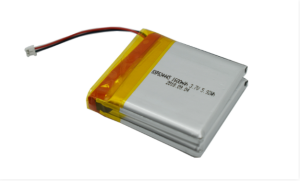Lithium-ion batteries can be said to be a very common battery in our daily life. Most of our mobile phones and notebooks use lithium-ion batteries. If you don’t know how lithium-ion batteries work, then we Let’s take a look at the article below, let’s take a look at the working principle of lithium-ion batteries.
1. First, let’s first understand what a lithium ion battery is
Lithium-ion batteries have the advantages of relatively light weight, relatively large capacity, no memory effect, etc., so they have been widely used. At present, many electronic digital products and equipment use lithium-ion batteries as the source of batteries. The price of Li-ion battery is relatively more expensive, but it is reasonable to be expensive. The energy density of lithium-ion batteries is relatively high, and the battery capacity is one to two times that of nickel-metal hydride batteries of the same weight and volume. And it has a very low self-discharge rate. Of course, lithium-ion batteries have no memory effect and do not contain toxic substances, which are also great advantages.
2. the working principle of lithium-ion batteries
When charging the battery, lithium ions are generated on the positive electrode, and the generated lithium ions flow to the negative electrode through the electrolyte. At the same time, the carbon has a layered structure as the negative electrode with many micropores. The lithium ions reaching the negative electrode are embedded in the micropores of the carbon layer. The more lithium ions are inserted, the greater the charging capacity. Similarly, when the battery is discharged (that is, the process when we use the battery), the lithium ions embedded in the carbon layer of the negative electrode will escape and move to the positive electrode again. The more lithium ions returned to the positive electrode, the greater the discharge capacity.
Generally, the charging current of a lithium battery is set between 0.2C and 1C. The larger the current, the faster the charging speed and the greater the heating of the battery. In addition, the charging current is too large and the capacity is not enough, because the electrochemical reaction inside the battery takes a certain amount of time. Like beer, pouring too fast will also produce foam, not dissatisfaction. For batteries, normal use is a discharge process.
Post time: Sep-22-2021





